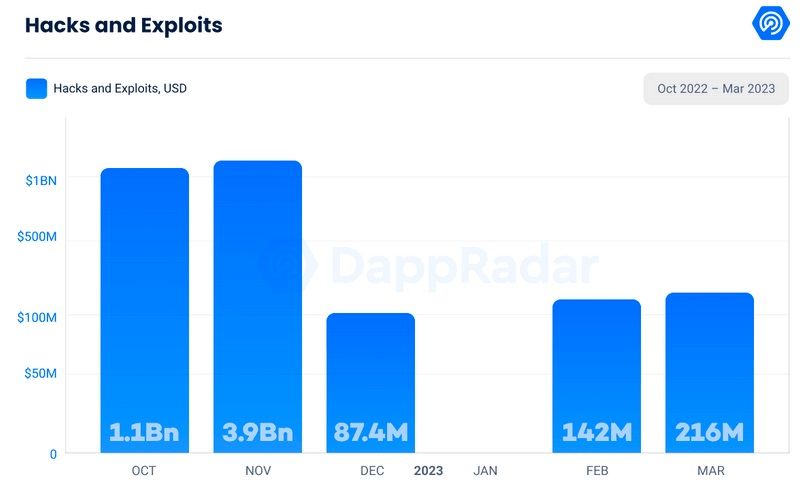Americans Lost $2.57 Billion to Crypto Scams Last Year: Report

[ad_1]
Of all the tricks that bad actors use to bilk money from unsuspecting victims, investment scams are as popular as ever. And, within that category, it’s crypto investment scams that account for a record $2.57 billion of losses in 2022, out of a total of $3.82 billion for the year.
These are the findings of a new report from Carlson Law detailing the problems that continue to plague the crypto industry. And, in the eyes of some, to erode the credibility of the digital asset market more generally.
Crypto Investment Scams on the Rise
The report’s findings will not be surprising to those who have followed the rise of pig butchering scams and other types of fraud. Increasingly, fraudsters will reach out to someone online with a promise of a lucrative investment opportunity.
What starts out as a chance to make modest gains turns into an ordeal. The victims find that the exchange where they have parked their money has some pretext or excuse for postponing or not allowing any withdrawal. The money is gone, and there is no getting it back.
But, as the new report makes clear, that is far from the only ruse that fraudsters put to use. And scammers are growing more sophisticated, and using methods that incorporate artificial intelligence (AI).
“Many of these new scams utilize artificial intelligence, such as voice cloning, and have law enforcement scrambling to keep pace,” the report states.

Scammers Love California
While it may seem that fraud is on the rise everywhere, the crisis is particularly acute in certain jurisdictions. Of all states in the union, scammers have hit California the hardest.
The report ranks California first for the total amount of money that bad actors took in 2022, namely $870 million. The state comes in second for the average amount of the loss per victim, $176,463, and fifth for investment fraud per capita, with 12.6 out of every 100,000 residents falling victim.
Only New Hampshire ranks above California for the total loss per victim. In the Granite State, the figure comes to $204,447.
From this point of view, the safest Americans are those living in Iowa, Mississippi, and West Virginia. In those states, only 2.6, 2.4, and 2.2 victims per 100,000, respectively, fell prey to investment scammers last year.
What to Watch Out For
The report identifies a number of common types of investment scam. It also provides useful pointers on how to avoid falling prey.
As noted above, AI increasingly provides criminals with deep fake videos, appearing to show real people offering legitimate investment opportunities.
The report cites one case where a “voice clone” of Elon Musk lured a woman to a website where she thought she could buy shares of Musk’s stock for $250. Then, she invested a large part of her savings, never to see the money again.
This problem is all the more acute thanks to the growing sophistication of AI. In fact, University of Maryland researchers have cast doubt on the reliability and effectiveness of tools that in theory should spot such deep fake simulacra.
So what can you do? The report urges would-be investors to meet any representatives in person. And, if a celebrity offers you overnight riches, that is as obvious a red flag as you will ever encounter.
ICO Fraud
Another common type of scam is crypto initial coin offering (ICO) fraud. Bad actors pitch fake ICOs using fabricated websites and promotions on social media to trick investors into buying into a purportedly big stock market debut.
Then, as you can guess, they abscond with their ill-gotten gains. Good look getting any of the money back.
While scammers may think they are clever, it is not that hard to spot a fake ICO, the report says. Read the promotions, check the spelling and grammar and other signs of DIY marketing.
And always conduct background checks on those who would do business with you. Don’t send money to people you don’t know. So much of the fraud was avoidable if people had followed this elementary rule.
The Pump and Dump
The third type of common scam that the report names is the “pump and dump” scheme. Bad actors will engage in wash trading or other tricks to foster the appearance of heavy market activity around a given token or product.
That, of course, is not a legitimate strategy but a ruse to drive the price up so they can sell high. And then, as in other investment scams, they go on the lam, the report states.
The report urges people to check on the trading activity of a given investment product going back months, not just a few days. What is the historical performance? And, again, solicit expert advice before investing.
Disclaimer
In adherence to the Trust Project guidelines, BeInCrypto is committed to unbiased, transparent reporting. This news article aims to provide accurate, timely information. However, readers are advised to verify facts independently and consult with a professional before making any decisions based on this content.
[ad_2]
Source link
